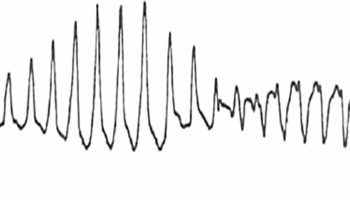What is viremia
Viremia is the presence of viruses in the blood. First entry of virus into the bloodstream is primary viremia (can be active or passive). This viremia may be subclinical and is the route by which viruses get to their sites of infection. After the infection occurs, then a secondary viremia can take place because of shedding of virus from the infected organ. This secodary viremia can then be the cause of infection at yet another site of the body.
Viruses may circulate freely in the blood (hepadnaviruses, togaviruses, flaviviruses, and enteroviruses), or they may associate with leukocytes (white blood cell), platelets, or erythrocytes and be harbored by them (HIV, Rift Valley Fever, Colorado tick fever). The latter viral infections are more difficult to clear and tend to be more persistent infections.
Macrophages have a lot to do with the type of infection that may be caused after a primary viremia. The factors that are important are the area of the body in which the infection occurs (different types of macrophages in different parts of the body), the susceptibility of the macrophages to infection, the state of their activation, and the age and genetics of the host. In most cases, macrophages are efficient destroyers of virus, but in some cases, as in dengue fever, they may serve as a host and carry the virus to different parts of the body.
Infection at a site after primary viremia has a lot to do with the nature of the vascular endothelial cells at that site and the amount of blood flow through the site. Virions tend to attach better in areas where the blood flow is slower. The viruses may get through the endothelials cells by squeezing between cells, or by directly infecting them and moving from cell to cell.
Because your immune system is constantly fighting viruses in the bloodstream there must be some sort of mechanism to constantly put out virus to maintain a viremia. This is particularly important in spread to certain parts of the body such as the central nervous system, where a constant viremia is necessary for the virus to be able to cross the blood/brain barrier. The viremia is usually maintained by either direct infection of blood cells (leukocytes usually) or infection of another organ which constantly is shedding virus into the bloodstream.
Viremia causes
Most viruses can potentially cause viremia. But while there are many types of viruses in the world, only some are known to cause illness in humans.
Some common or well-known causes of viremia include:
- HIV types 1 and 2
- influenza
- viral pneumonia
- viral meningitis
- varicella zoster virus (chicken pox or shingles)
- measles, mumps, and rubella
- rotavirus
- enterovirus
- herpes
- human papillomavirus (HPV)
- hepatitis B and C
- Zika virus
- West Nile Virus
- adenovirus
- avian influenza virus
- dengue fever
- yellow fever
- Japanese encephalitis virus
- cytomegalovirus
- ebola
- Rift Valley fever virus
- croup
- rabies
- polio
Throughout history, viruses have survived by being incredibly adaptable and resilient to life both inside and even outside of a host.
Many viruses use body fluids to spread between hosts. However, some viruses can live on a dry, non-porous surface, such as a plastic container, for 7 days or more.
Common ways viruses spread include:
- fecal-oral route (accidental ingestion of fecal matter)
- sexual contact
- contact with saliva or mucus (from coughing, sneezing, or touching, for example)
- mosquito or insect bites
- breast-feeding
- congenitally, or from mother to fetus during pregnancy or childbirth
- blood transfusion
- organ donation
- through cuts or severe injuries
Viremia signs and symptoms
The symptoms of viremia often depend on the cause of the infection, but many viral infections cause a similar set of symptoms.
Common signs of viral infection and viremia include:
- fever
- general exhaustion
- muscle and joint weakness, pain, and aching
- a headache
- dizziness or light-headedness
- diarrhea, nausea, or vomiting
- chills
- runny or congested nose
- sore throat
- cough
- poor appetite
Skin – this usually results in some sort of rash made up of macules, papules, vesicles or pustules.
Central nervous system (CNS) – spread is usually from blood vessels in meninges and choroid plexus and infection of neurons in cerebrospinal fluid, or directly from blood vessels of the brain and spinal cord. Spread is usually either by infection of endothelial cells or transport directly through the endothelial layer. Rarely by infected leukocytes moving into brain.
Another important route is travel of virus up neurons (rabies, varicella, herpes simplex)
Meningitis is infection of lining of brain and CNS (meninges)
Encephalitis is infection of brain
Other organs – liver (hepatitis), heart (carditis), lungs (pneumonia), salivary glands (mumps), testes (orchitis)
Fetus – 1) teratogenic effects (CMV and rubella) such as deafness, blindness, congenital heart and brain defects, 2) fetal death (smallpox, parvovirus 19)
Viremia diagnosis
Sometimes, a doctor may be able to diagnose viremia based on a person’s medical history and a physical examination.
Blood tests and blood cultures may also be necessary to determine or confirm the specific cause of viral infections and viremia.
In some cases, a doctor may diagnose viremia by comparing a person’s symptoms with those of other viral infections that someone has potentially been exposed to. A doctor is more likely to do this during an outbreak or epidemic of a specific virus.
Viremia treatment
For most viral infections, treatment involves dealing with the symptoms of the infection rather than the virus itself.
Typical therapies for viral infections and viremia include:
- rest
- fluids, especially those high electrolytes
- anti-inflammatory and pain medications
- antiemetic or anti-nausea medications
- clear fluid foods, such as clear soup broths
- antihistamines
- anti-diarrheal medications
- anti-itch creams, such as hydrocortisone creams
- nasal decongestant medications and rinses
- throat lozenges or numbing sprays
- cough syrups
In severe cases, fluids may be given intravenously in a hospital.
A few antiviral medications exist, but each medicine is usually only effective against a specific virus or family of viruses.
In many cases, antiviral medications can only help reduce the spread or severity of viral infections, but not cure them.
Some antiviral medications also work predominately by strengthening the immune system response, not destroying or disabling the virus.
Antiviral medications are also usually non-specific, meaning they target healthy cells alongside viruses.
Another drawback of antiviral medications is that viruses can evolve and become immune to the medication, especially if the drugs are not taken correctly.
In some cases of viremia, doctors will recommend a treatment called interferon. Interferon is a group of around 20 related signaling-proteins made by human immune cells in response to viruses.
So far, antiviral medications exist to help treat:
- HIV
- influenza
- hepatitis C
- shingles
- rabies
- herpes
Vaccines
There are also vaccines available that can significantly reduce the risk of developing some of the most serious and prevalent human viral infections.
Vaccines work by exposing a small portion of the virus to the body’s immune system, allowing it to recognize and destroy invading viruses before they can initiate an infection.
Most people receive an initial set of vaccinations or immunizations when they are very young. They will then receive new vaccinations periodically throughout early childhood and adulthood.
Many people will also receive vaccinations for specific viruses and diseases before traveling internationally.
How long these vaccines are effective for usually depends on the type of vaccine. Common effective periods range from a few months to decades.
Some vaccines can act as preventives, which can help treat active cases of the same virus.
Some viral infections with widely available vaccines include:
- influenza
- polio
- rubella
- hepatitis A and B
- chickenpox and shingles
- yellow fever
- HPV (human papillomavirus).
Viremia prognosis
Many people develop viremia each year, but most cases resolve with basic at-home care.
Preventive measures, such as vaccines and immunoglobins, can significantly reduce the risk of developing some types of viral infection.
However, some viral infections, including meningitis, hepatitis C, and HIV can be life-threatening and require immediate medical care. Treatment may include intravenous fluids, antiviral medications, immunoglobins, and forms of interferon.
Anyone who experiences severe or long-lasting symptoms from a viral infection should seek medical attention.
People living or traveling in an area where there is a viral outbreak or epidemic should isolate themselves and seek medical care if exposed to infection.
People with compromised immune systems, such as those with HIV or taking cancer medications, should always seek medical care for suspected viral infections.





